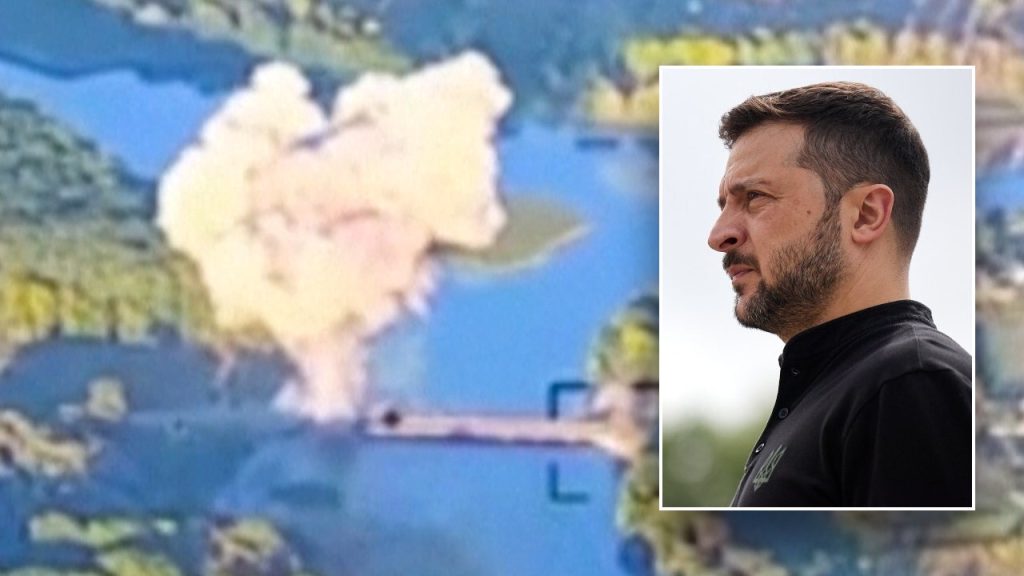Ukrainian President Volodymyr Zelenskyy announced that the surprise invasion of Russia’s Kursk region was intended to create a “buffer zone” between the two countries and complicate Moscow’s cross-border offensive. This move is part of their primary task in defensive operations to destroy Russian war potential and conduct counteroffensive actions. The Ukrainian forces destroyed one bridge and struck a second in the region to disrupt Russian supply lines. Pro-Kremlin war bloggers confirmed that the first strike was successful, but the location and efficacy of the second attack were not specified.
The reported strikes on Russian infrastructure have further complicated the situation that has placed Moscow on an unexpected defensive, causing a re-evaluation of its strategy along Ukraine’s northeastern border. The region was previously considered insignificant to the conflict just months after it began in 2022. The Ukrainian operation in Kursk Oblast has forced the Kremlin and the Russian military command to make a decision about viewing the international border with northeastern Ukraine as a legitimate front line that Russia must defend. Russia has spent resources to build fortifications along the border area but has not allocated manpower to significantly defend those fortifications.
Ukraine has claimed approximately 400 square miles of Russian territory since initiating the operation on August 6. The invasion has had a significant impact on Russian infrastructure and caught Moscow off guard, leading to a re-evaluation of its defensive strategy in the region. The Institute for the Study of War’s George Barros highlighted the decision point faced by the Kremlin and Russian military command regarding the defense of the international border with Ukraine. While Russia has built fortifications along the border, it has not allocated sufficient resources to defend them effectively.
The Ukrainian offensive in Kursk is part of a larger defensive strategy aimed at destroying Russian war potential and conducting counteroffensive actions. By creating a buffer zone in the Kursk region, Ukraine seeks to disrupt Russian supply lines and complicate Moscow’s cross-border offensive. The success of the strikes on Russian infrastructure has played a significant role in changing Moscow’s defensive posture and strategic outlook along the northeastern border. The unexpected invasion has put pressure on Russia to defend the international border with Ukraine and reevaluate its resources and strategy in the region.
The ongoing conflict between Ukraine and Russia has escalated with the surprise invasion of the Kursk region by Ukrainian forces. The operation aims to establish a buffer zone between the two countries, disrupt Russian supply lines, and complicate Moscow’s offensive strategy. The strikes on Russian infrastructure have further complicated the situation and forced Moscow to reconsider its defensive posture along the northeastern border. The success of the Ukrainian offensive has resulted in territorial gains and placed pressure on Russia to defend the international border with Ukraine more effectively. Ukraine’s continued operation in Kursk is part of its broader defensive strategy to undermine Russian war potential and conduct counteroffensive actions.


